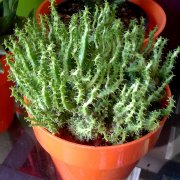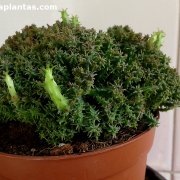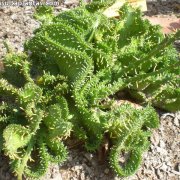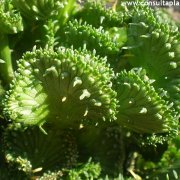Care of the succulent plant Euphorbia procumbens or Jellyfish Head Euphorbia |
|
The genus Euphorbia, family Euphorbiaceae, includes 2,000 species of succulents, trees, shrubs, and herbaceous plants of cosmopolitan distribution. Some species are: Euphorbia procumbens, Euphorbia viguieri, Euphorbia meloformis, Euphorbia lomelii, Euphorbia tithymaloides, Euphorbia obesa, Euphorbia milii, Euphorbia mammillaris, Euphorbia leucocephala, Euphorbia lactea, Euphorbia ingens, Euphorbia inermis, Euphorbia horrida, Euphorbia heptagona, Euphorbia handiensis, Euphorbia grandicornis, Euphorbia flanaganii, Euphorbia enterophora, Euphorbia enopla, Euphorbia echinus, Euphorbia cotinifolia, Euphorbia coerulescens, Euphorbia characias, Euphorbia candelabrum, Euphorbia canariensis, Euphorbia pulcherrima, Euphorbia resinifera, Euphorbia regis-jubae, Euphorbia bubalina, Euphorbia royleana, Euphorbia trigona, Euphorbia bivonae, Euphorbia rigida, Euphorbia handiensis, Euphorbia balsamifera. Common names: Jellyfish Head Euphorbia, Medusa's Head, Medusahoved. This species is native to South Africa and there is an interesting variety "Cristata". They are small, spineless succulent plants that reach 10 cm (3.93") in height. They have a main stem called caudex from which cylindrical secondary stems with small tubers sprout; They are initially light green in color and then darken with age. In the "Cristata" form it has interesting undulations also with tubers. The small flowers are greenish yellow. These easy-to-grow, slow-growing plants are used in pots due to their small size. Euphorbia procumbens can be grown in full sun or light shade exposure. In winter temperature should not be less than 5 ºC (41 ºF). The soil can be a commercial substrate for cacti and succulents with 25% coarse siliceous or perlite sand. Transplant in late winter or early spring if necessary. Water moderately in spring and summer, waiting until the substrate has completely dried. In autumn reduce watering and in winter water once a month at most. Fertilize in spring with mineral fertilizer for cacti. Pruning is not necessary. If there is excess irrigation or the ventilation is not correct, they can be attacked by mealybugs. Jellyfish Head Euphorbia propagates by seeds sown in spring or by stem cuttings in summer or spring. Dry the cuttings for 3 days and wash off the irritating latex, protecting your hands well. |
Images of the succulent plant Euphorbia procumbens or Jellyfish Head Euphorbia |
Find plants
Euphorbia procumbens or Jellyfish Head Euphorbia | Care and Growing
© 2026 FavThemes



